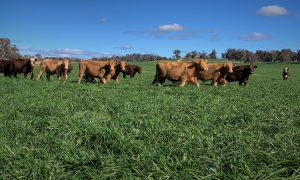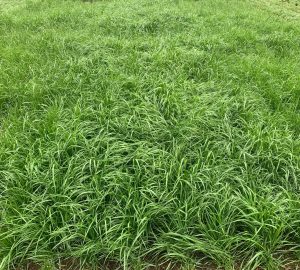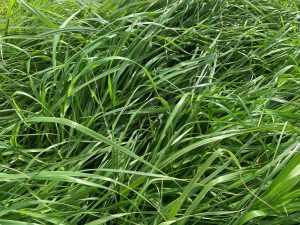Short-Term Ryegrasses: A Game-Changer
February 27, 2025 Australia
Short-term ryegrasses have been an important source of winter feed for farmers for many years, particularly in the coastal and southern regions of Australia. However, some agronomists believe ryegrass is under-utilised in other areas.
Gavin Milne, Technical Manager for AlfaGen Seeds Australia, has been conducting research and advising farmers and agronomists on the use of ryegrass in Australia for over 30 years. “In the past few years we have tested the performance of short-term ryegrasses in non-traditional regions, and farmers are impressed with how they can boost winter carrying capacity and live weight gain in cattle and sheep.”, says Milne.
Traditionally, farmers in regions like the southern downs of Queensland and slopes of NSW don’t plant a lot of ryegrass, generally relying on forage oats for winter production. One reason for this is that agronomists are aware that ryegrass is a temperate species that doesn’t grow or survive well in hot weather. Therefore, perennial ryegrass is not successful in these climates because plants die during the first summer. However, the temperate nature of annual ryegrass does not limit its use in hot climates because it is planted in autumn and thrives in the mild to warm temperatures over winter and spring.
So, what are the advantages of short-term ryegrasses? “Annual and Italian ryegrasses evolved in nature by setting seed in late spring before dying and then regenerating from that seed in autumn,” Milne said. “These ryegrasses developed vigorous winter growth so they could compete with other plants, set seed again and survive. Plant breeders have improved on this, creating varieties with even faster establishment and growth, and a range of dates when they set seed in spring.”
Farmers sow the seed in autumn, start grazing in about 6-8 weeks, and can then graze every 3-4 weeks through winter and spring. This feed is very valuable on properties where most of the farm is in pastures that don’t grow well in winter and spring, including sub-tropical and unimproved pastures. The high feed value of ryegrass, with ideal levels of energy and protein for live weight gain and milk production, is also a huge benefit. “After using short-term ryegrasses for the first time, I’ve had many farmers tell me they are amazed with the amount of animal production they get from such a small establishment cost.” says Milne.
Annual ryegrass pastures die out naturally in spring, fitting into a pasture or cropping rotation with summer crops planted in spring or waiting for sub-tropical pastures to regenerate. Italian ryegrasses can keep growing through the first summer, but only in the cooler regions like the NSW tablelands, southern Victoria, and Tasmania. With good rainfall they can last for 2-3 years.
Both species can also be made into hay or silage, providing high quality supplements in the bale or stack. Mixing with legumes and herbs can boost feed value and provide the nitrogen fixation benefits from the legumes.
Due to the significant role of annual and Italian ryegrass in Australian grazing and hay farms, AlfaGen Seeds is dedicated to developing improved varieties that suit the diverse requirements farmers. This has led to three new varieties being released in recent years.
“Kiama is a new tetraploid annual ryegrass, selected for high production over winter and spring to maximise the benefits each time farmers plant a pasture,” said Milne. “It also has a late heading date allowing more flexibility for farmers in spring with feed quality being maintained longer. Kiama pastures are particularly dense and have high ground cover due to an increased number of tillers. This density makes Kiama more resilient to grazing when soils are wet, allowing for more reliable pasture growth in winter, and better production throughout spring. Farmers have been impressed with the growth and animal performance, and the extended production in spring.”

Mazzoletti Italian ryegrass, another new release from AlfaGen, is a tetraploid variety with high dry matter production and a mid-heading date of +17 days. Mazzoletti is an excellent choice for farmers looking to boost their winter and spring feed production while ensuring high stock performance. With its fast establishment and rapid regrowth during winter, Mazzoletti provides farmers with the results they need.

AlfaGen’s new diploid Italian ryegrass, Bermagui, has excellent tiller density, allowing it to tolerate intense grazing and wet soil conditions. With improved pasture density in spring, it maximises production in spring and early summer in hot climates and comes back strongly in the second year in regions with mild summer stressors. Bermagui is the perfect Italian ryegrass for farmers to choose when they want a combination of high winter production and extended pasture life.

With the release of these three short term ryegrasses by AlfaGen, agronomists can choose the ideal variety to meet the diverse needs of farmers and regions. According to Milne, these new varieties integrate seamlessly into farm systems that are experienced in using the species, but there are also opportunities to use them in non-traditional regions to boost production on beef, sheep, and hay production.